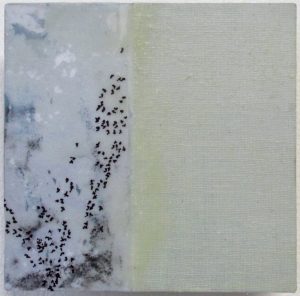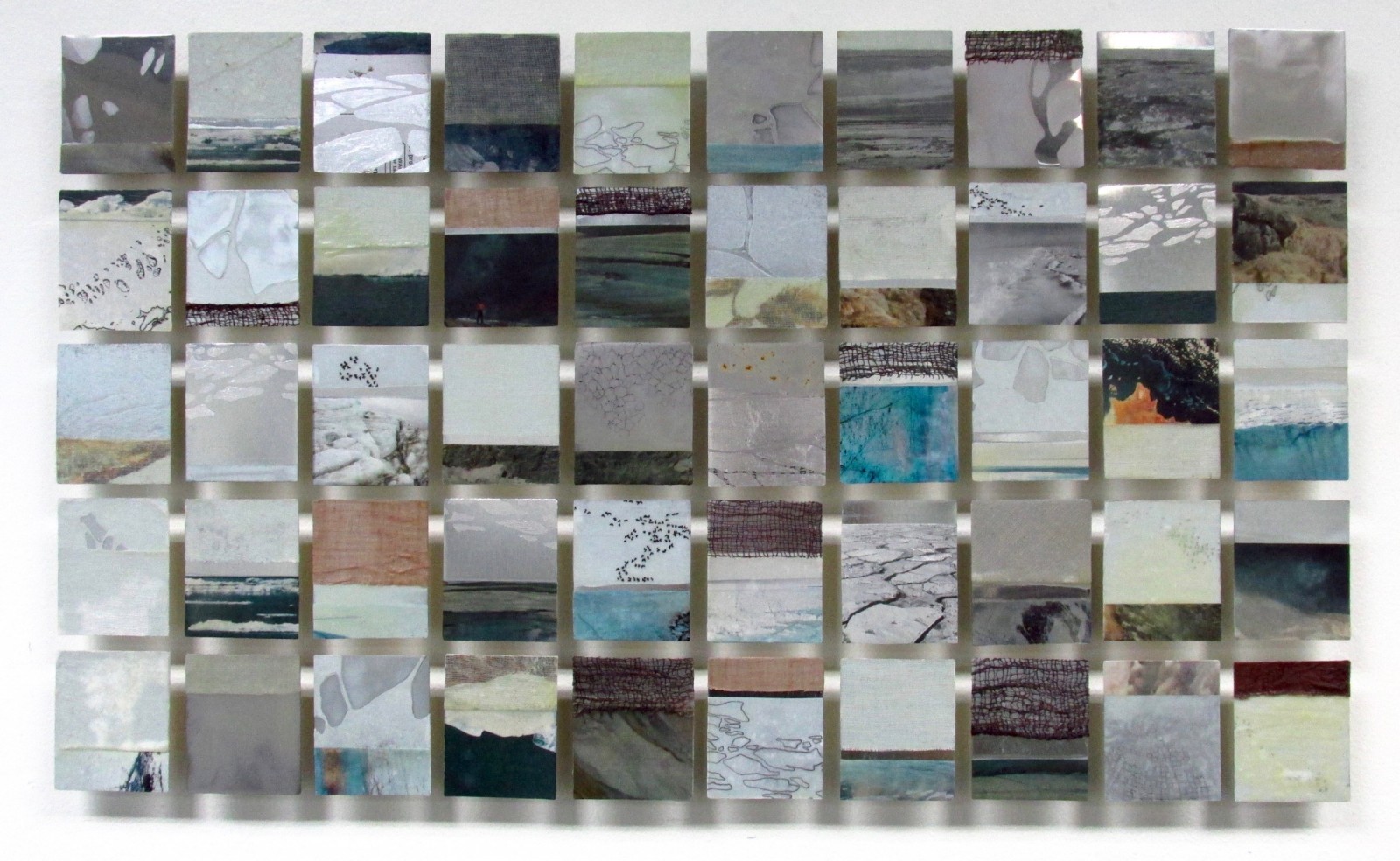Katie lives in a cabin with no running water in Haines, Alaska; a small town adjacent to over 25 million protected acres of glacially carved mountains, rivers, fjords, and ocean. Her work reflects on what it means to rely on the land for survival. We were in contact with Katie and her work during our festival in 2017, and we wanted to find out more about her interesting perspective on the Arctic and how it connects to her work so we interviewed her.
WHAT INSPIRES YOU IN YOUR WORK? WHAT IS IT UNIQUELY ABOUT THE ARCTIC, THE LOSS OF ICE AND SNOW THAT DRIVES YOU TO CREATE?
Living roughly 550 miles south of the Arctic Circle, my home in Southeast Alaska faces similar climatic challenges as those in the far north. We are watching this already dynamic, glaciated landscape, melt at an alarming rate without fully understanding the implications of how warmer temperatures will shift current ecosystems. It is this change I try to capture in my art. The naturally occurring forces of this place remind me, as an art maker, to pay close attention, as if the land is speaking and I need to pause long enough to hear its story. I think a lot about the land immediately surrounding me, since it shapes my daily decisions, limits, and survival.

Grief Dares Us
As a contemporary artist in this landscape, I investigate and document these nuances and use artmaking as a visual tool to show what I find to be beautiful, and to make a conceptual, political, and ethical statement. My work is a reflection on loss, and a story of memory, rebound, and change.
In Grief Dares Us, I experimented with adding and subtracting materials, and eventually deconstructed the original piece. What remained became the substrate to layer the existing materials. The ink drawing on tissue paper is layered with encaustic wax as a way to seal the drawing to the metal while providing tension between malleable and rigid materials. In this paradox of hard and soft is where I find the pliability needed to live fully in the North.

Feedback Loop
Material choices and application play an important role in my art, as a majority of my work is on found, hand-cut scrap metal. The juxtaposition between the ephemeral quality of my subject matter and the longevity of human-made metal offer a physical layer to the conceptual loss I’m interested in. For similar reasons, I use repetition of size, color palette, and materials. In the series, You Are a Tender History of Ice, I created 50 pieces, all 2.5 by 3 inches, as a way to tell individual stories that all, inevitably, have a similar outcome. I think a lot on the consequences of surface color and reflectivity, particularly the necessary reflectiveness of ice, or its albedo. For example, in Feedback Loop, I used silver leaf on metal to mimic ice in the form of a silhouette of two hemlock trees outside my front door. The contrasting reflection draws in outside influences that can change the composition entirely.

You are a Tender History of Ice
WHAT DOES THE ARCTIC/NORTH MEAN TO YOU – IT IS A HOME, OF COURSE – BUT IN WHICH WAYS IS IT MORE OF A HOME THAN OTHER PLACES?
There is an overwhelming feeling of gratitude, joy, and awe in being able to call this place home. I appreciate knowing not all places on the map have names, that not all mountains have been climbed, that a place can still feel wild, haunting, dangerous, and unassuming. The isolation of this place creates a vibrate community of people engaged in what the land provides. Our conversations circle around to when the salmon are expected to run, where the berry picking is good, what was cancelled due to weather. We are attune with this place, therefore, to our own senses and being. These are daily reminders of what it takes, and means, to be alive. We find comfort in long distances, the unknown, and unpredictability. Like art, living in the North provides an essential feedback loop in being human.
Feedback Loop has previously appeared in Dark Mountain: Issue 11, the University of Southeast Alaska Literary Arts Journal, Tidal Echoes, and will appear in the Summer 2017 issue of Camas Magazine.
Katie’s work can be found in Shifting Landscapes, an exhibition at form & concept Gallery in Santa Fe, New Mexico; in San Francisco Public Library’s Jewett Gallery exhibition, Reclaiming Earth; and in the Sheldon Museum & Cultural Center permanent collection, in Haines, AK. To learn more about Katie and her work, visit www.katieionecraney.com.
Passionate about anything to do with arts and the outdoors, Laonikos writes about his experiences as a guide in Finnish Lapland. He is an avid sauna goer and bakes his own bread.

